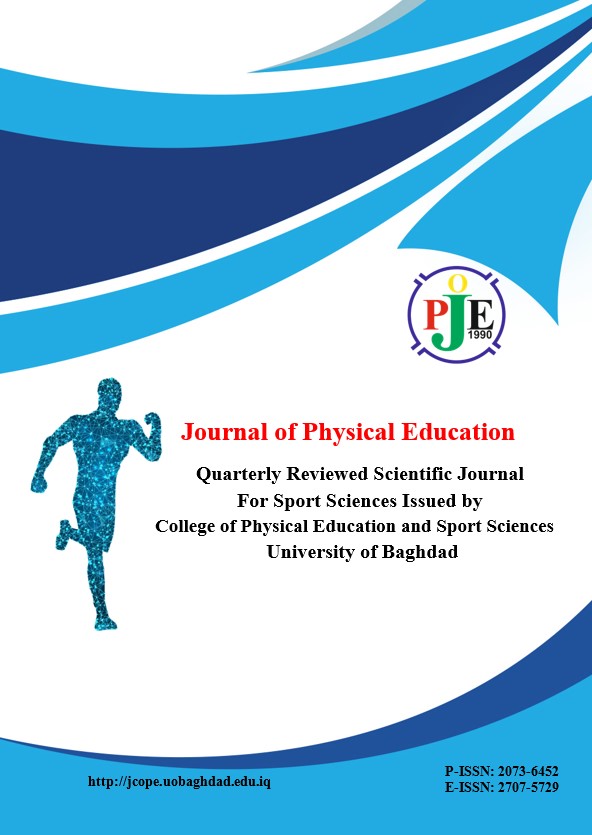Training Speed According To Power – Work Based on Rest Periods to Improve Bio Energy and Its Reflections On kinetic Energy and Achieving 100m
Keywords:
Bio Energy, kinetic EnergyAbstract
The development of bio energy of 100m runner leads to an increase in muscle proficiency to cover the distance with less time thus moving the runners mass from starting line to finish line as fast as possible due to the runner's high bio energy that reflect muscle work. Since body mass and average of speed indicates the motor energy of a runner during race, this energy could be developed by increasing the proficiency of the working bio energy in certain events using special training requirements. This form of training based on rest periods enables ATP – CP to regain its previous status between training sessions. The importance of the research lies in concentrating on rebuilding bio energy in Iraqi 100m youths runners through recovery periods and their reflection on motor energy during special speed training. The effects of these training styles has not been used before in improving the level of bio energy in this event as well as its effect on kinetic energy of runners during muscular work to cover the race distance with the highest level of proficiency. Aims of the research:1. Identifying muscle work (kinetic energy) in Iraqi runners in different phases of the race 2. Identifying the effect of the training program based on rest periods on the development of bio energy and their reflection on kinetic energy through power and work law.The Hypotheses Of The research :1.There are significant differences in motor energy indicators using proper rest periods for different phases of the race between pre and posttests.2.There are significant differences on special speed indicators and achievement between pre and posttests.The researchers used the experimental method. The subjects were seven 100m runners. The researchers used many training methods on short distance runners:1.Absolute Speed training 2.Special Race Speed Training.The researchers concluded the following:1.The ability of runners developed during 30m and 50m acceleration due to using recovery periods that allowed the rebuilding of ATP – CP which indicates that time and kinetic energy develop according to these tests.2.There was an improvement in average absolute speed and its kinetic energy that is achieved in 70m test.3.There is a development in 60m test results in posttests which indicated a development in the physiological level.4.Continuing the training program achieved good physical and physiological adaptation that lead to the development of achieving 100m running.














 The Journal of Physical Education (JOPE) applies a Creative Commons Attribution 4.0 International license (CC BY 4.0), which lets others distribute, remix, tweak, and build upon your work, even commercially, as long as they credit you for the original creation. For more information, click the link :
The Journal of Physical Education (JOPE) applies a Creative Commons Attribution 4.0 International license (CC BY 4.0), which lets others distribute, remix, tweak, and build upon your work, even commercially, as long as they credit you for the original creation. For more information, click the link : 